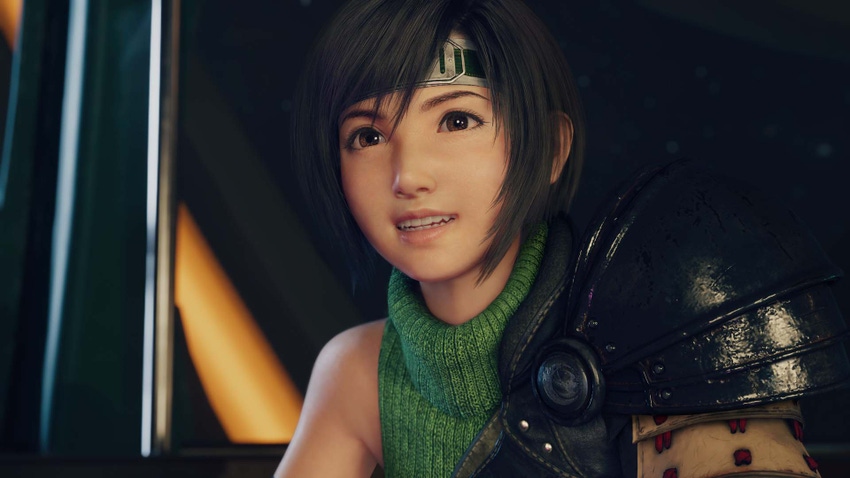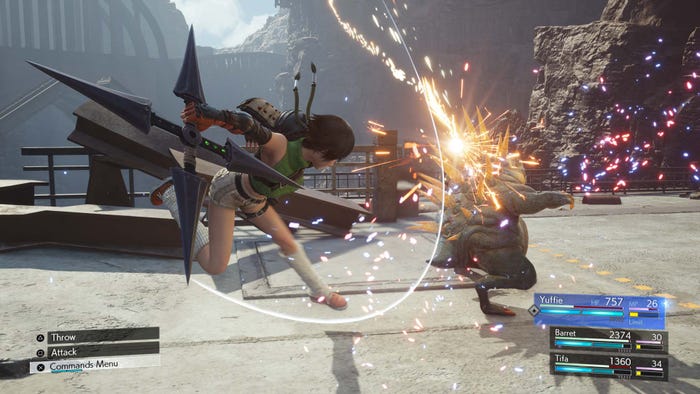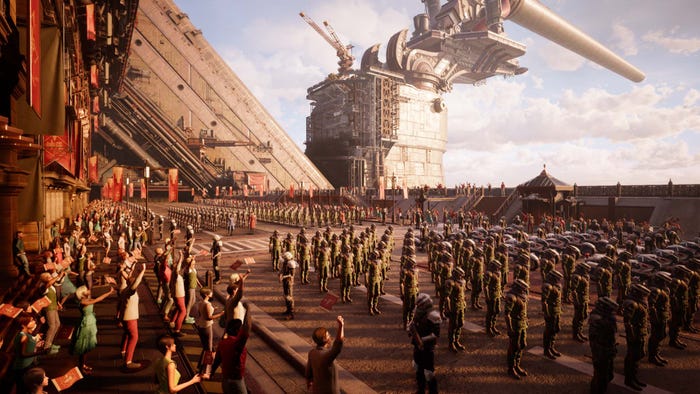
At a Glance
- A highlight of Final Fantasy VII was when the game suddenly shifted to an open-world map—a dramatic reveal in 1997.
- Final Fantasy VII Rebirth's developers want to remake that powerful moment—even though open-world games are now common fare.
As the franchise's first step into the 3D era, the original Final Fantasy VII is fondly remembered for having many iconic moments throughout its sprawling story. However, one moment that serves as a significant plot and gameplay breakthrough is when Cloud and his party take their first steps outside Midgar and into the larger world – setting the stage for their grand adventure. For the developers at Square Enix, this moment serves as the starting point for Final Fantasy VII Rebirth, and Final Fantasy's return to a fully realized world map.
Making that moment work in 2024 is a different prospect than in 1997. In the '90s, open worlds were but a far-off dream. Now they're so common even indie developers can pull them off.
We recently spoke with game director Naoki Hamaguchi and lead producer Yoshinori Kitase about the making of Final Fantasy VII Rebirth following some hands-on time with the game, the legacy of the original game, and how making FFVII Rebirth a more open world experience was about focusing on the "essential sense of excitement" of exploring Final Fantasy VII's world with a party of heroes.
Remaking Final Fantasy VII's World Map
Following the conclusion of 2020's Final Fantasy VII Remake, which was a simultaneous retelling and subversive continuation of the original, Cloud and his party of rebels take their first steps out of the sprawling megacity Midgar and into the world beyond in pursuit of the villain Sephiroth. Moving away from the more linear and story-driven pace of first game, Rebirth features its own remake of the traditional Final Fantasy "world map" for the modern era – which some recent games had phased out in favor of more story-driven, linear progression.

Image via Square Enix.
Essentially, as an explorable overworld where players can travel to new areas on foot and in vehicles, the world map was an effective way to showcase scope and give players a sense of progression as they advance the story. For many players, FFVII's world map reveal was an impactful moment in seeing a fully 3D overworld to explore, and according to game director Naoki Hamaguchi – the Rebirth developers spent a lot of time looking back on their memories of the original game when it came to building up their reimagined take on the world map for Rebirth.
"When I first played FFVII, I was exactly like other players; I felt that immense excitement and freedom the moment that you step outside of Midgar into the world map, and that's a feeling that remains within me," said Hamaguchi. "Reflecting on the original game now, I do believe the world map does possess a lot of core elements from the game, but it did not have much that's unique to it. For Rebirth, we wanted to showcase more within the overworld setting – having various characters living in these different locales living their own lives, as well as mini-games and side quests found throughout."
"We really focused on that essential sense of excitement in those first steps out into the world map of Final Fantasy VII, and then translated in a way that will resonate with today's players," he continued. "This was sort of a key point for us in development, to showcase the true opening up of the game."
The game director also stated that he felt a personal challenge from fans after reading online comments that showed skepticism that Square Enix's devs could build an open world-style overworld for the game. While the initial idea for the Final Fantasy Remake saga was to up the scale and style to make it more like modern Final Fantasy games and the film spin-off Advent Children, it became a sticking point for the devs to remake the overworld to feature more exploration and moments where the characters can bond as a party.
There's more of Gaia to explore
Exploring the revised world map of Final Fantasy VII was an interesting experience a brief hands-on session with the game. It even begins a Breath of the Wild-style intro with Cloud opening the doors to a bright and expansive Grasslands zone. It evokes a sense of nostalgia for the classic overworld with its many familiar musical themes and the sprawling setting. Seeing how Final Fantasy VII's world was revamped to fit a more open-world style environment was also intriguing.
According to the developers in previous interviews, other open-world games such as The Witcher 3: Wild Hunt and Horizon Zero Dawn inspired the team to utilize space and fill it with activities that built up the world. Speaking with producer Yoshinori Kitase, who worked as a director on the original Final Fantasy VII, he stated that new technology has allowed the developers to create a more fulfilling setting and storytelling in ways the original couldn't accomplish.

Image via Square Enix.
"With the original game, we were within the limitations of technology at the time – the character models, the cinematics, and the battle scenes, they were all using differing polygon counts for differing modes of expression," said the producer. "The original had characters that were created with 400 polygons, and that, of course, didn't allow much room for expressions or a voice of their own, so all we could do was to sort of emote with movements and overreactions."
"But now, with the specs of the PS5 console and its enhanced graphics, we can convey a lot more detail and emotion more consistently across the game while also making the time it takes to load and bring in new data very quickly for our larger world. In that sense, the SSD technology and its capabilities have greatly enhanced what we could do to revitalize Final Fantasy VII."
The opportunity to explore and fight battles in a large setting with the FFVII cast is a significant draw for many, and Rebirth presents that compellingly by giving incentive to explore and try side activities. Many familiar beats and locations, such as the Chocobo camp and the swamp home to the massive Midgardsormr return, but they're given more context for their place in the world and how players engage with it.
During a brief hands-on with the game, the amount of scope could occasionally feel overwhelming. To producer Kitase, having that option to run around and explore was necessary for Rebirth to fit the change in scenery and to elevate the FFVII experience up to modern standards.
"I felt it was important for us to allow players the choice in how they want to explore the world, but at the same time, I wanted to keep the scope and core plot of Final Fantasy VII intact as many players are anticipating what comes next with the story," said the producer. "So with the larger world to explore, this now allows for more activities and side quests that open up this setting if you want to engage with that. I think this reasoning applies to other games today, giving the choice and freedom to choose their own way to play. I think this will become more of a focus in that way for other great games going forward."
A larger open world opens up more time with the cast of Final Fantasy VII Rebirth
It was interesting to see how Final Fantasy, particularly the mythos of Final Fantasy VII, engaged with more modern ideas and tenants of open-world design. However, Rebirth really impressed me with how it engages with these elements with a full party of characters. Seeing the cast of FFVII together, all exploring a large, lush field, was particularly satisfying, especially with how all party members are together at all times to offer banter and insights on the story – even when riding chocobos.
This particular aspect stuck out for the game's director, which he felt spoke to his admiration for the original game and what it accomplished with its story and cast, which he believes is the reason for its staying power nearly 30 years since its debut.
"For me, Final Fantasy VII is the ultimate character role-playing game," said Hamaguchi. "It's left such a mark in the minds and hearts of people, and not many games have managed to stay with people for so long. FFVII has strong characters and a unique setting that's so solid and endearing, so when reconstructing what the original game is and what it could be for the Remake series, I looked at how we could reach the true essence of FFVII and what made it so special. I believe we have accomplished that with this game, and I'm very much excited for players to enjoy it."
For now, Final Fantasy VII Rebirth and how it'll approach its continuation of Remake's subversive yet equally satisfying retelling of the FFVII mythos is in most players' minds. However, its core gameplay focuses on recreating one of the original's biggest reveals, which is looking to be a compelling and satisfying hook in its own right.
About the Author(s)
You May Also Like









